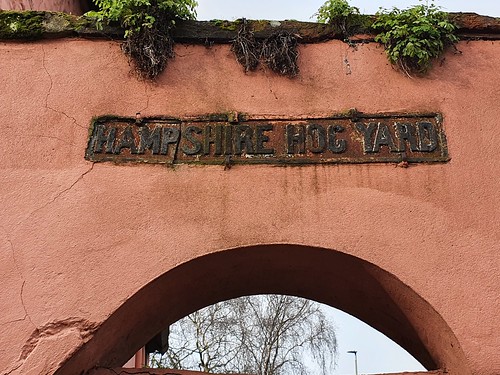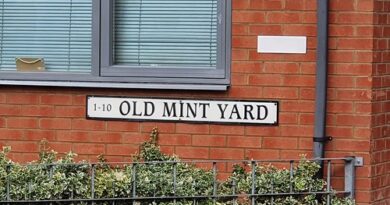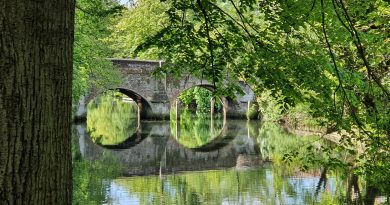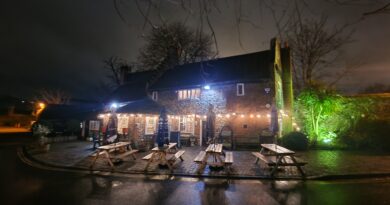Streets of Norwich – Hampshire Hog Yard
Part of my Streets of Norwich project….
Located along St. Swithin’s Alley is the remnants of Hampshire Hog Yard, which was accessed from behind the Hampshire Hog pub, from which it took its name.
This is one of the six remaining thatched properties in Norwich and its current name, rather sensibly, is the Thatched Cottage. It was built as a residential property in the seventeenth century and became a pub in the early nineteenth century. The licensee in the 1880s was John ‘Licker’ Pratt who fought Jem Mace in a two-hour long bare knuckles fight and I can’t imagine that was pretty. Pratt won the contest though and I suspect he wasn’t concerned about dealing with any problems that might arise in his pub after that. It remained as a pub until 1912 when the authorities were trying to reduce the number of licensed premises. The street line used to go up to the frontage of the house, so there wasn’t historically a garden area as there is today and George Plunkett has a photo of this from 1938.
The Norwich Preservation Trust acquired the building in 1971 and renovated it over the next few years. George Plunkett offers some additional information about the pub, noting:
“A yard at the rear bears the name of the Hampshire Hog, the sign of an adjacent tavern, being possibly the last house in England where the game of logats was played. The logats, resembling policemen’s truncheons, were to be tossed as near as possible to a wheel-shaped jack which had previously been thrown towards the opposite end of the ground; there was some similarity to the game of bowls. A set of logats is preserved in the Strangers Hall Museum.”
The sign, which isn’t immediately obvious to those walking by, to the former entrance to Hampshire Hog Yard. The yard was cleared just before the Second World War as part of the project to remove slum dwellings in the city, with no access now possible. In 1906, it was advertised that all the housing in the yard, and some besides, was for sale at public auction and, at that time, the properties here were unlikely to have been in a particularly good state of repair.
I’m not sure how old that sign is (someone has produced a guide to London street signs to help age them, but I’m not sure that any such facility exists in Norwich) but it must be at least eighty years old and is likely a fair chunk older than that.
As for why the Hampshire Hog got its name, I’m unsure. A pub with the same name in London has its origins as a nickname for members of the Royal Hampshire Regiment, rather than anything to do with pigs. Perhaps there’s some similar link here.









